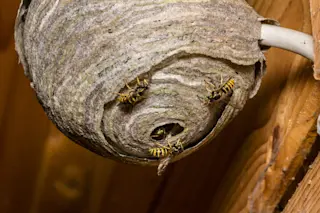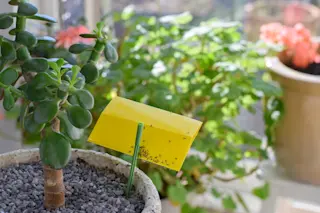On August 13, 2005, American archaeologist James Petersen,Brazilian archaeologist Eduardo Neves, and two colleagues pulled up to a restaurant on a jungle road near Iranduba in the Brazilian Amazon to have a beer. At about 6:45 p.m., two young men, one brandishing a .38 revolver, entered the restaurant and demanded the patrons’ money. The archaeologists turned over their money and the bandits started to leave. Then, almost as an afterthought, one of them shot Petersen in the stomach. Neves and the others raced Petersen to the hospital, but their friend bled to death before they could reach help.
State and municipal police reacted quickly to the news, cordoned off roads, and brought suspects to the restaurant for identification.Within 24 hours the police had arrested the two armed bandits and their driver and learned there were two others involved. The crime was front-page news in Manaus, the capital of the state, a city of more than a million about an hour north of the study site, across the Rio Negro. After a 21-day manhunt through the jungle, the remaining two fugitives were captured, and when the state police brought the criminals back, the Iranduba chief of police, Normando Barbosa, says, “there were hundreds of people lined up on the road that wanted to lynch the killers.”
This outrage reflected a response not only to the crime but also to the victim. Over the past decade, Petersen, Neves, and their band of archaeologists had become local heroes, earning the appreciation of the surrounding community during seasonal digs conducted on the peninsula that separates the Rio Negro and Amazon rivers. At more than 100 sites across the peninsula, Petersen and his colleagues had unearth edevidence of early civilizations that were far more advanced, far more broadly connected, and far more densely occupied than that of the small bands of nomadic hunter-gatherers previously hypothesized for the region. Before the Europeans arrived, this peninsula in the heart of the Amazon was home to communities with roads, irrigation, agriculture,soil management, ceramics, and extended trade. These civilizations, Neves says, were as complex as the southwestern Native American cultures that inhabited Chaco Canyon and Mesa Verde. But due to the scarcity of stone in the Amazon, the people built with wood, and overtime the structures disintegrated, leaving little evidence of the culture.
One legacy remains, however: their soil. Terra preta de Indio—Portuguese for “Indian black earth”—is prized among local farmers, and it is a direct contribution of the vanished Amazonian cultures. While most Amazonian earth is notoriously nutrient poor, yellowish, sterile, and unscented, there are extensive patches of soil that are mysteriously dark, moist, fragrant, and filled with insects, microbial life, and organic matter. Scholars have come to realize that by devising a way to enrich the soil, the early inhabitants of the Amazon managed to create a foundation for agriculture-based settlements much more populous than scholars had thought possible.
Petersen had called the soil a gift from the past; he believed that studying it would reveal the region’s past cultures in a new, much more complex light. At the time of his death, he and his colleagues had been developing a workshop for teachers in the region on the science andarchaeology surrounding terra preta. The discovery held meaning for more than archaeologists, however. Figuring out the composition of dark earth and how it was formed offers a way to improve soil fertility for today’s small farmers and also curb carbon emissions from the fires that these farmers set to clear the forest. Yet after Petersen’s murder the project was shut down, and those who had gathered for both the workshop and the August field season were sent home. Had the Amazon turned too dangerous for its inhabitants to learn their own ancestors’ secrets?
No one ever saw those populations again.
The first scientists who studied the Amazon found little evidence to support Orellana’s claims of large populations. As productive and lushas the rain forest appeared, the soil it stood on was, literally, dirt poor. Betty J. Meggers, a Smithsonian archaeologist who worked in the Amazon from the mid-1900s on, referred to the region as “a counterfeit paradise.” The apparent lushness existed only because the vegetation was so good at sucking up every speck of nutrient released from decaying leaves. Any nutrients remaining washed away in the frequent rains. In short, the local soil was ill-suited for agriculture, and without agriculture, societies would remain small.
The outcome of the slash-and-burn agriculture that is practiced today supports that view. In this method, settlers cut down forests and burn the cover in order to grow crops in the nitrogen- and mineral-rich ash that is left behind. But the soil in these denuded plots is productive for only a few years before it reverts to its original nutrient-scarce state. This lack of agricultural potential helped popularize a model of the pre-Columbian occupation that anthropologist Michael Heckenberger of the University of Florida at Gainesville describes as “the myth of Stone-Age savages frozen at the dawn of time.
In the months to follow, Heckenberger and Petersen worked to develop a project around the site with Neves, and the Central Amazon Project was born. The group wrote up institutional agreements, received permits, got seed money, and began fieldwork in 1995. When their early finds seemed to challenge Meggers’s vision of the pre-Columbian Amazon,they turned to a model proposed by Donald Lathrap, an archaeologist at the University of Illinois. During the 1960s, he had hypothesized—based on linguistic and ceramic evidence—that the confluence of the Amazon,Rio Negro, and Madera rivers may have been the heart of an agriculturally based civilization that once extended from the Caribbean to southern Brazil.
Heckenberger left the Central Amazon Project in 1999 to concentrate on the Kuikuro, but Petersen and Neves continued the effort. Over the years, excavation expanded beyond the original site, called Açutuba, toinclude other spots in a 20-square-mile area on the peninsula that juts between the Amazon and Rio Negro rivers. Gradually funding switched from U.S. institutions to predominantly Brazilian, and Neves took more of an oversight role. But Petersen continued to participate every summer. In a 2005 interview with the Vermont Quarterly, he called his central Amazon research “some of the richest, most exciting archaeology anywhere on the planet.”
In the afternoon, Neves takes me to the Hatahara site, about eight miles from Donna Stella, which contains traces of a more sedentary way of life. Here pottery shards litter the ground. At one of the site’s two excavations, the broken bits stick out from the earthen walls of a large square pit. The layers of protruding pottery are so tight and thick they look almost like wall coverings.
The Hatahara site contains traces of four separate occupations by farmers. The people of the Açutuba phase, who are thought to have come from the Caribbean coast, may have been the first to settle the area, living in villages up to five acres in size, each supporting 100 to 200people. Neves believes that they lived on fish, wild meats, palms,fruits, and manioc, a root that can grow in poorer soils year-round.Although this early culture had only rudimentary agricultural practices, Neves says, the plant and animal refuse they were leaving provided the substrate for future terra preta soils.
Helena Lima, a Ph.D. student at the University of São Paulo, is trying to pinpoint when and how this soil was used to support greater populations in the Amazon Basin. She sees a stark difference between the Açutuba phase, from 300 B.C. to A.D. 400, and the later Manacapuruphase, from A.D. 400 to 900. “The Manacapuru were the first people who really changed the soil,” she says.
The terra preta soils at Hatahara and the other sites are made from a mixture of plant refuse and animal and fish bones, along with large quantities of charcoal that were deposited after settlers used stone axes and slow-burning fires to clear forest. Such smoldering fires produced more charcoal than ash. The charcoal, soot, and other carbon remains (collectively called biochar) retained nutrients, particularly potassium and phosphorus, that are limited in tropical soils. The resulting improvement in soil fertility may have allowed the land to support a larger, more stable crop-based population, although studies of fossilized pollen have not yet revealed the specific plants they cultivated.
The next phase of settlement, the Paredão, occurred from about A.D.700 to 1200. Neves suspects that the Paredão were outsiders from the south. The occupation is peaceful, though, and the Paredão and the Manacapuru lived and traded with each other.
The Paredão exploited terra preta soils even more than their predecessors. While the initial settlers in this area may have created the dark soils by accident, William Woods, director of environmental studies at the University of Kansas, says that “at some point they recognize their importance and start to promote them.” Over time, the villages of the Paredão become larger, denser, and surrounded by agricultural fields. Populations grow into the thousands at sites ranging from 5 to 40 acres. The lack of fortification strongly suggests that the groups lived in peace.
But around 1200, the Guarita people from the east threatened to attack, and the Paredão built defensive structures. This phase lasted into the time of European occupation. Over the same period, the Paredãovanished. The Guarita apparently moved in from areas near the mouth of the lower Amazon, which have even more terra preta soils than the Paredão, and brought with them wilder, multicolored styles of pottery.
“They are like the barbarians attacking the Romans,” Neves speculates. He suspects that the newcomers may also have had a valuable possession—corn. This new, more nutritious staple requires better soils, and it is not unreasonable to suspect that the Guarita drove the Paredão out to take over their valuable cropland, built on terra preta.
Analysis of buried human remains suggests that the inhabitants of all four occupations were robust—a well-being that extended even after death. In the site’s remains, Anne Rapp and her husband, Claide Moraes, both students at the University of São Paulo, find evidence that hints at ceremonial procedures, priests, and perhaps a cottage industry of funerary artisans as well.
Although the central Amazon may not have been the heart of the massive empire that Donald Lathrap envisioned, these cultural traces suggest that the Amazonians managed to flourish in a formidableenvironment—and terra preta may have been an important component of that success.
As thrilling as this evidence is to archaeologists, it may also have very practical importance as a modern weapon against some of our mosturgent ecological problems. Soil scientist Johannes Lehmann of CornellUniversity believes that the mysterious dark earth holds clues to creating sustainable farming practices and even to combating global warming.
Lehmann explains that nutrients from plant and animal remains—like nitrogen, phosphate, and potassium—bind to charcoal or biochar,drastically reducing how much is washed away by the constant rains. Itis a gradual process that begins with the charcoal breaking down in the soil over time. Tiny pores in the charcoal, along with changes in its chemistry, provide more surfaces for nutrients to adhere to, which in turn encourages microorganisms to colonize the soil. “With a handful of biochar you can keep many more nutrients in the soil than with a handful of mulch or compost. It is like mopping up nutrients with a magnet that looks like a sponge—that is, it has high surface area like a sponge but can attract a thin layer of material like a magnet,” Lehmann says.
Although the complete transformation of soil ingredients into true terra preta may take several years, soil scientists have shown that the mixture can have immediate benefits when added to nutrient-poor soils.Experiments outside of Manaus have shown that the yield in plots treated with charcoal and fertilizer (which contains plant nutrients),a mix similar in composition to terra preta, was double the yield of plots treated with fertilizer alone.
In 2001 Petersen published a paper reporting one example of a farmer who had cultivated crops on terra preta soils near Açutuba for 40 years without ever adding any fertilizer. “That’s incredible,” Woods says.“We don’t get that in Iowa.” A few years of Amazonian rains will wash away the nutrient-laden ash from land that was cleared by slash-and-burn techniques, but the charcoal in the terra preta soils persists. The terra preta soils at the Central Amazon Project goes back in many places as much as 2,500 years.
Creating new terra preta in the Amazon today would have several advantages, Lehmann says. First, because the enriched soil remains fertile for a long time, its use would discourage farmers from moving on and burning more forest to open up new fields. Second, because of the added charcoal, terra preta holds up to 10 times as much carbon as unaltered soils. The late Wim Sombroek—a legendary soil scientist whose long interest in terra preta earned him the epithet “the godfather of dark earth”—began to wonder if dark earth could be used to sequester carbon. Lehmann’s studies have shown that it can: Fifty percent of the original carbon in plants and trees used to make biochar remains in the terra preta soils after the conversion.














